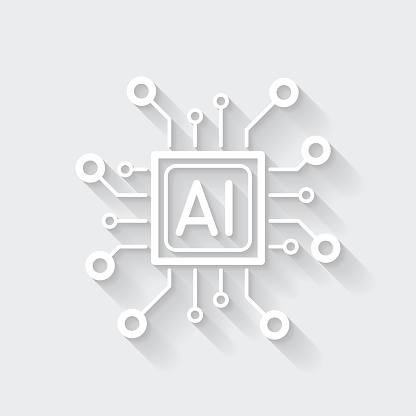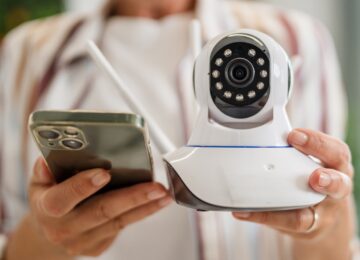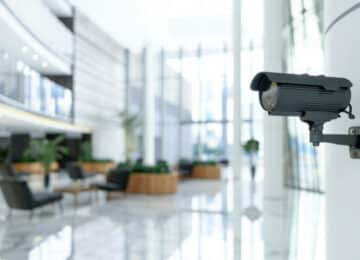AI, Machine Learning, Deep Learning: the differences in video surveillance

Artificial intelligence-assisted video surveillance has been in the news a lot in recent years, and for good reason. With recent developments in object and motion detection, the functions built into security systems are making them faster and more accurate than ever. But what makes them so effective? Mainly Machine Learning and Deep Learning, which are branches of AI. In this article, we explain the differences between these terms and show you in more detail what they have to offer video surveillance solutions, particularly for retailers.
AI: what exactly is it?
AI is on everyone's lips, but what is it really? First of all, its name refers to human intelligence, which is our ability to know and understand the world around us, abstract concepts, etc., but also to adapt to new situations. So-called artificial intelligence is first and foremost a reproduction of human faculties through technology. There is even talk of "neuralnetworks", "learning" and "training". It uses a number of technologies that open up a whole range of possibilities, including analysis, prediction, visualisation and language.
Technological developments and practical applications
Although the origins of machine learning date back to 1957 with the invention of the Perceptron, the first machine learning algorithm, it is only since the 2010s that significant progress has been made. Computers have increased their storage capacity and power. What's more, the quantities of data available are now massive, encouraging technological advances. But these advances are only just beginning. For the time being, we are talking about "weak AI", i.e. artificial intelligence designed to carry out a specific task, such as playing chess, assisting users by voice, performing calculations, and so on.Strong AI", on the other hand, is a horizon, a goal to be reached where artificial intelligence is indistinguishable from human intelligence.
In the field of video surveillance, artificial intelligence already offers many solutions to meet the security requirements of professionals, thanks above all to Machine Learning.
Machine Learning: definition and applications in video surveillance
Machine Learning(ML) is the basis of artificial intelligence. It is a learning technique based on structured data. Structured data is information that has been defined and organised beforehand, ready to be processed. It consists mainly of words and numbers in databases.
In a traditional shop security system, video surveillance managers have to stand in front of screens that relay camera images and detect thefts themselves. Machine Learning algorithms save time and relieve this exhausting task. In effect, the systems are trained on a large volume of data so that they recognise a shoplifting situation on the basis of examples of cases that have previously been submitted to them. When they identify them, they send an alert to the agent or shopkeeper, who then doesn't have to monitor the videos all the time.
Deep Learning: explanation and benefits for retail security
But what exactly is Deep Learning(DL)? In French, it means "deep learning". Its use is historically more recent than Machine Learning, because it requires a great deal of computing power. It is based on convolutional neural networks (CNNs), which are used to process images and sound. This type of learning is based on a particular arrangement of the neural network in several layers. Each layer corresponds to an additional level of complexity. In other words, the first layers analyse certain separate elements of an image or sound, and subsequent layers of neurons perform calculations on them to refine the identification. As a result, the system learns by itself from unstructured, i.e. raw, data, rather than by comparison with pre-established models.
This type of learning has several advantages: it is fast, reliable and accurate. As a result, the processing of suspicious gestures is improved. But that's not all: AI continues to learn in real time and does not need human intervention to program or update the system. It is therefore refined on the basis of the images captured by the security cameras.
AI and Veesion software
The Veesion video surveillance software for shop managers is based on these advanced technologies. Machine Learning and Deep Learning are used to quickly and accurately detect suspicious gestures that might be identified as shoplifting. Retailers can then act immediately to deter shoplifters or to check with customers as they leave the shop.
Be that as it may, even if artificial intelligence is a great help because of its remarkable performance, it is in no way supposed to take the place of humans when it comes to making decisions based on the detection of suspicious gestures. What's more, it never uses facial recognition and does not record any information about the identity of individuals. The use of artificial intelligence in video surveillance is highly regulated for reasons of privacy protection. The solutions we offer are therefore naturally compliant with the RGPD (General Data Protection Regulation).
To sum up, Machine Learning and Deep Learning are both categories of AI. But the former is a learning system that uses structured data, often requiring human intervention, whereas the latter works in layers and improves on its own from raw data. For retailers, these two technological advances simplify shop surveillance and reduce losses due to shoplifting. For example, our Veesion software reduces shrinkage by 30% to 60% and detects around 100,000 suspicious gestures per month in the more than 3,000 shops equipped with it worldwide.
The most popular
Related news
Discover what Veesion can do for you. Do you have one or more stores?
Our team will contact you within 48 hours





